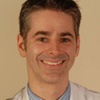Author Interviews, Compliance, Cost of Health Care, Emergency Care, Primary Care, UCSD / 15.07.2015
Primary Care Continuity Reduced Emergency Department Use and Hospitalizations
 MedicalResearch.com Interview with:
Nadereh Pourat, PhD
Professor, Department of Health Policy and Management, UCLA Fielding School of Public Health
Adjunct Professor, UCLA School of Dentistry
Director of Research, UCLA Center for Health Policy Research
Medical Research: What is the background for this study? What are the main findings?
Dr. Pourat: We have succeeded to insure most of the uninsured population in the U.S., but now have to figure out how to reduce costs while improving health. We had the opportunity to examine the role of continuity with a primary care provider, which is one of the pathways that looked promising in improving health and reducing costs. We were evaluating a major demonstration program in California called the Health Care Coverage Initiative (HCCI) and one of the participating counties implemented a policy to increase adherence by only paying for visits if patients went to their assigned providers. We examined what happened to patients who always or sometimes adhered to their provider versus those who never adhered. We found that adherence or continuity reduced emergency department use and hospitalizations. This would lead to savings because of the high costs of these services.
Medical Research: What should clinicians and patients take away from your report?
Dr. Pourat: The study shows that both patients and clinicians would benefit from continuity with the primary care provider. Clinicians can actually make a difference in helping patients: they can teach patients about self-care and help them manage their conditions better. Patients would benefit from following through with treatment plans and experience less medical error and duplication of services which are potentially harmful. Continuity fosters rapport and trust between patients and providers and can be beneficial to both.
(more…)
MedicalResearch.com Interview with:
Nadereh Pourat, PhD
Professor, Department of Health Policy and Management, UCLA Fielding School of Public Health
Adjunct Professor, UCLA School of Dentistry
Director of Research, UCLA Center for Health Policy Research
Medical Research: What is the background for this study? What are the main findings?
Dr. Pourat: We have succeeded to insure most of the uninsured population in the U.S., but now have to figure out how to reduce costs while improving health. We had the opportunity to examine the role of continuity with a primary care provider, which is one of the pathways that looked promising in improving health and reducing costs. We were evaluating a major demonstration program in California called the Health Care Coverage Initiative (HCCI) and one of the participating counties implemented a policy to increase adherence by only paying for visits if patients went to their assigned providers. We examined what happened to patients who always or sometimes adhered to their provider versus those who never adhered. We found that adherence or continuity reduced emergency department use and hospitalizations. This would lead to savings because of the high costs of these services.
Medical Research: What should clinicians and patients take away from your report?
Dr. Pourat: The study shows that both patients and clinicians would benefit from continuity with the primary care provider. Clinicians can actually make a difference in helping patients: they can teach patients about self-care and help them manage their conditions better. Patients would benefit from following through with treatment plans and experience less medical error and duplication of services which are potentially harmful. Continuity fosters rapport and trust between patients and providers and can be beneficial to both.
(more…)



















